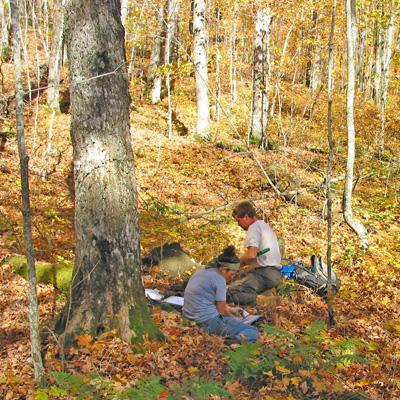Determining the Mineralogical Identity of Occult Calcium in Forest Soils of the Northeast

Available calcium in soils of the Northern Forest may become deficient from cumulative impacts of acidic deposition and harvesting. Little is known about the unavailable forms of calcium in soil minerals (rock) that may weather and resupply the soil calcium pool. What portion of total calcium content can be accounted for by available soil calcium and unavailable mineral calcium? How does this vary with depth in a soil weathering profile?
To answer these questions, NSRC researchers sampled soils from three contrasting watersheds: Sleepers River Research Watershed, Vermont (high calcium site); Hubbard Brook Experimental Forest, New Hampshire (moderate calcium site); and the Neversink Watershed in the Catskill Mountains of New York (low calcium site). In the laboratory, researchers carried out a quantitative assessment of calcium using advanced instrumental techniques, including total elemental analysis and electron probe microanalysis. The latter technique enables the identification of soil minerals at a fine scale.
Researchers determined that the high-calcium watershed in Vermont has a range of calcium-bearing minerals including calcite, apatite, clinozoisite, hornblende, actinolite, and grossular and calcium feldspar. At the moderate and low-calcium sites, most of the calcium appears to be in calcium feldspar and an, as yet, ill-defined form. Calcium phosphate (apatite) was found in low concentrations in deeper soil horizons. The Catskill site has little calcium left in any form, weatherable or not, and may be susceptible to calcium deficiency.
Download printable version [PDF]
